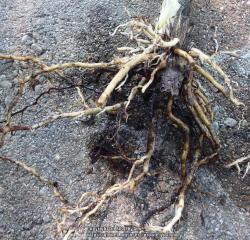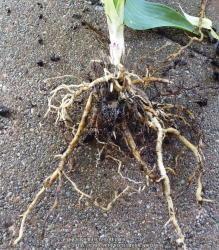This is a problem that I'm having difficulty learning about. There's not much that shows up with a search. But I have them in my garden. I destroyed 3 12-yr-old plants this morning and I think it's time we talked about this problem.
Unlike HVX which can be controlled by knowing the symptoms, removing plants, not planting another hosta in the same place and using good garden hygiene, this problem is incidious, might be in the plant a long time before one takes notice and there's not much one can do about it.
A couple of years ago we have a late-season ice storm in late April. That summer, several of my largest hostas seemed stunted. But I hoped for the best. Last year, I noticed 'Salute' looked healthy but very small. And this year I included 'Alligator Shoes' in that category. Also, 'Cutting Edge'. Yesterday, I dug 'Salute' and found clear evidence of large galls on the roots caused by root-knot nematodes. Today I dug the other two which were in close proximity. More galls. I've got more hostas that don't look as healthy as they should, including 'Liberty' and 'Spilt Milk'. I don't know how many more I want to dig and destroy and later this week it will be hot - too hot to be digging up hostas to inspect the roots.
The big problem is that there are few things one can do and many kinds of plants that are affected. I can't just pop another perennial in the spot. I don't even know if I can find any marigolds at this point in the season - garden centres have almost nothing this year and I'm in a vulnerable age bracket and really limit going out.
Anyway, here are some pictures. If your hostas suddenly are smaller than they've been, this may be the problem. Note, on the advice of Bill Brashear, I washed 'Salute' so we could see the galls better. I didn't bother with the other two because there was the problem of disposing of the muddy water.
First three are 'Alligator Shoes'
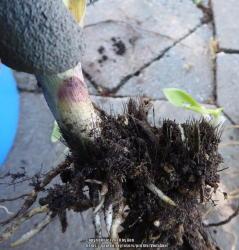
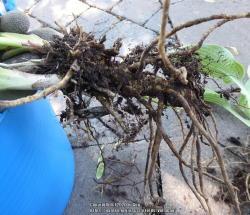
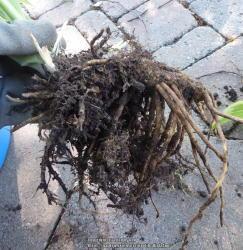
Next four are 'Cutting Edge'
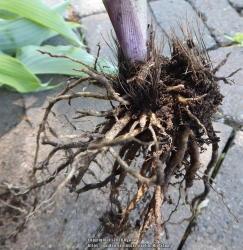
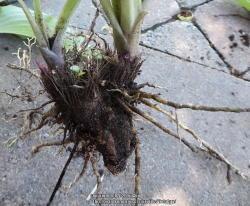


Last three are 'Salute'

